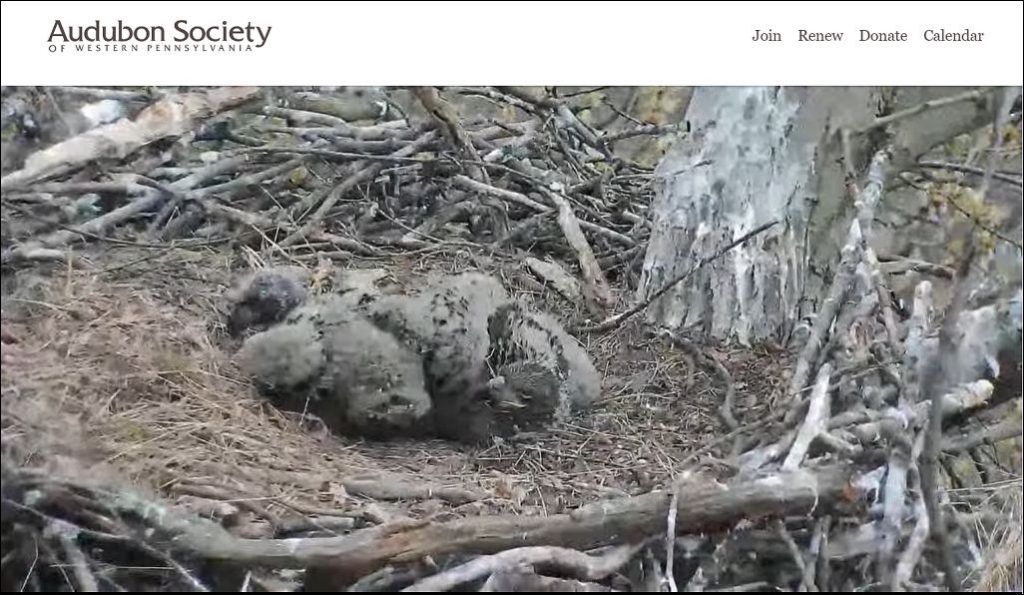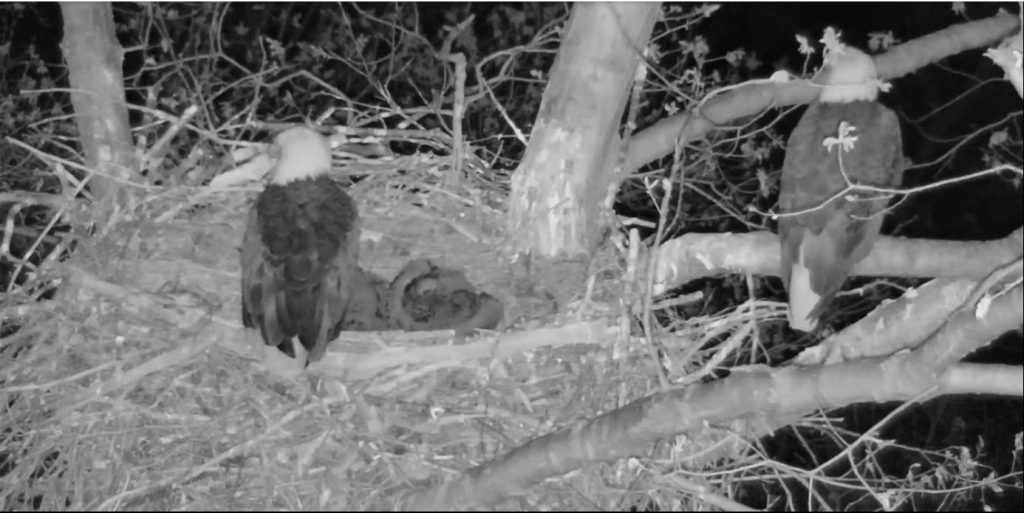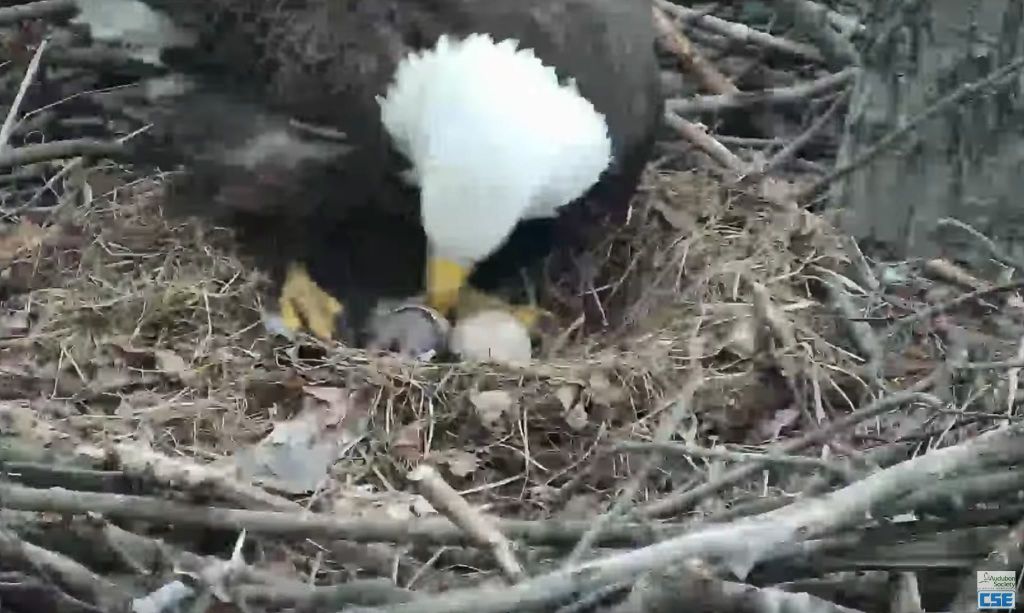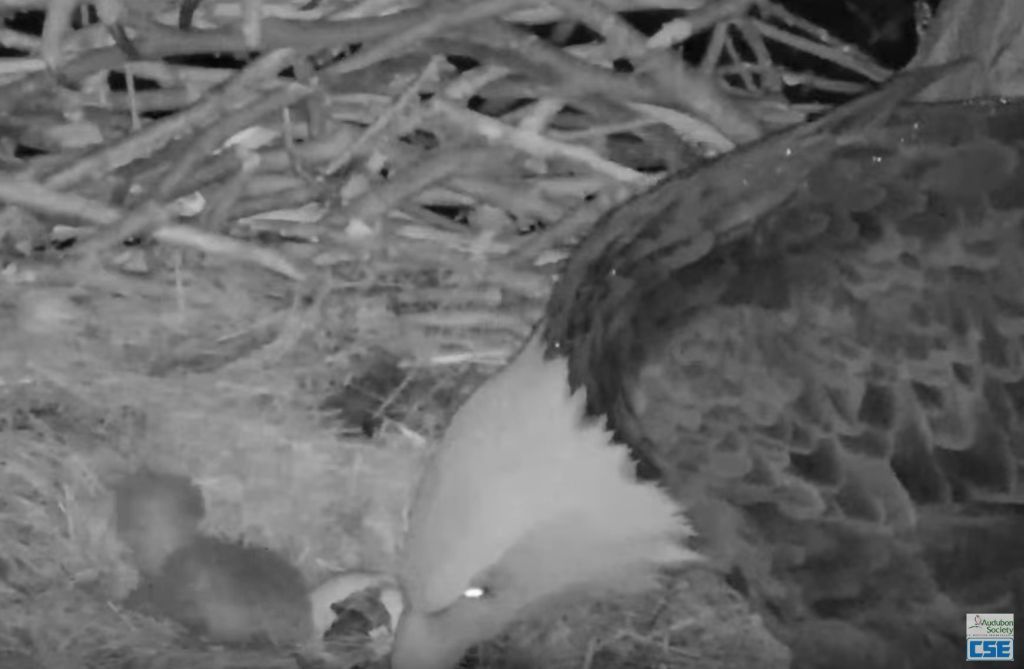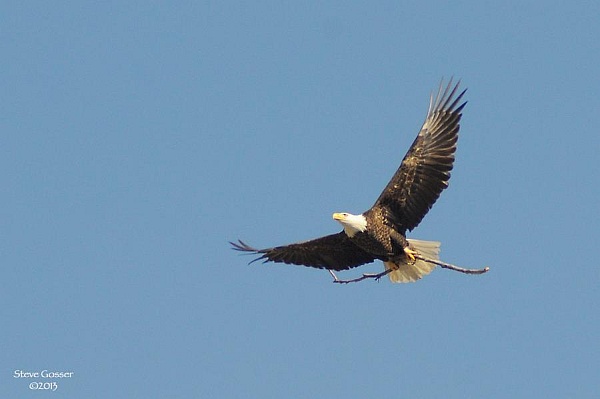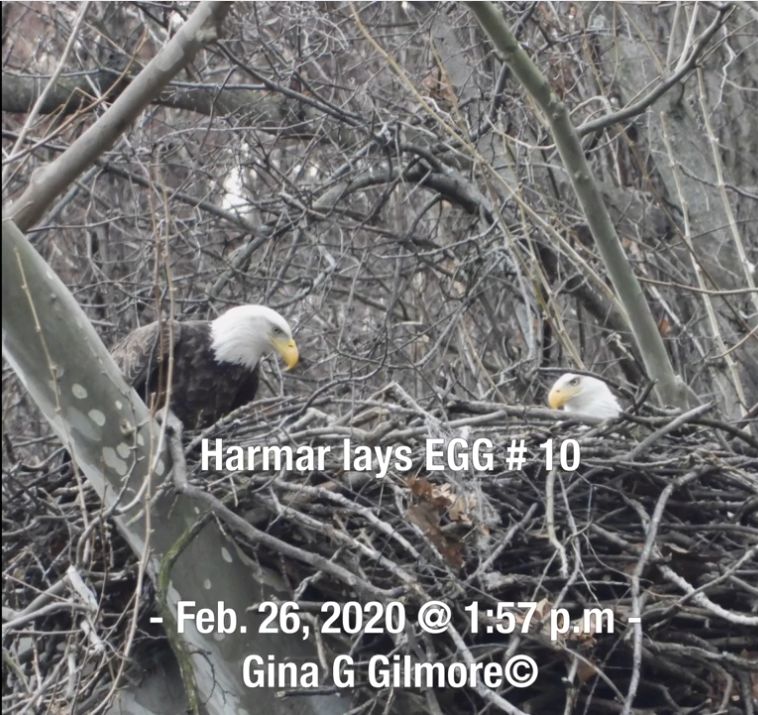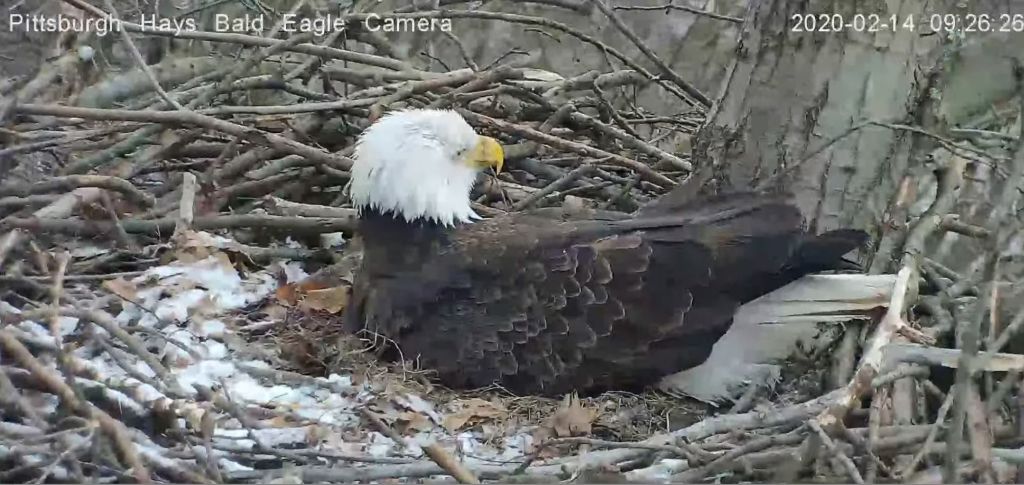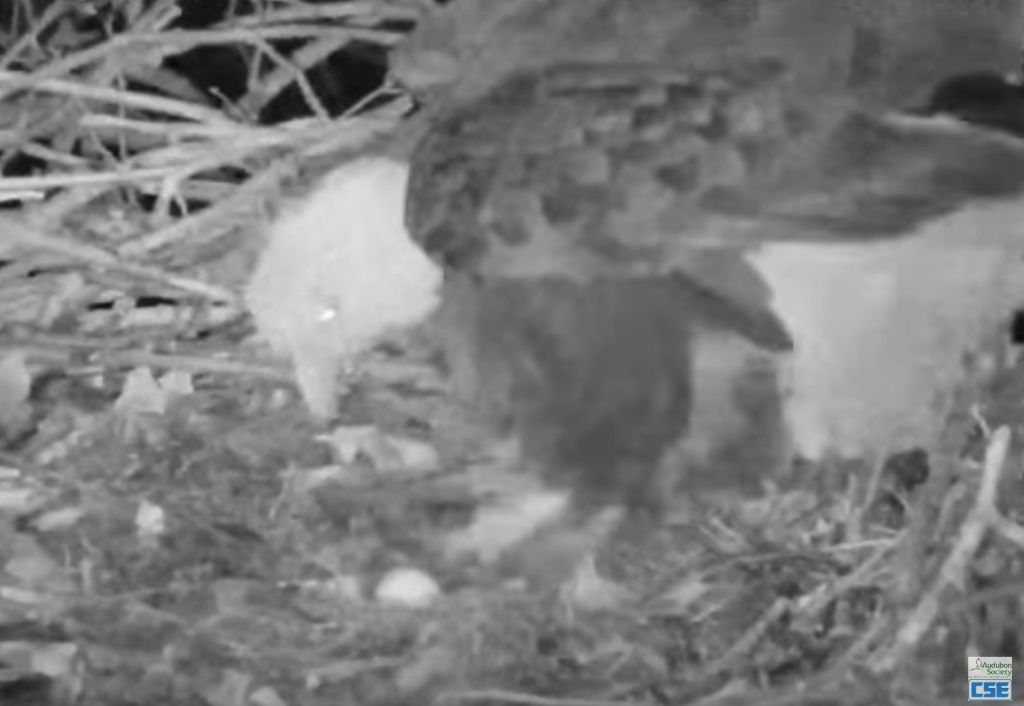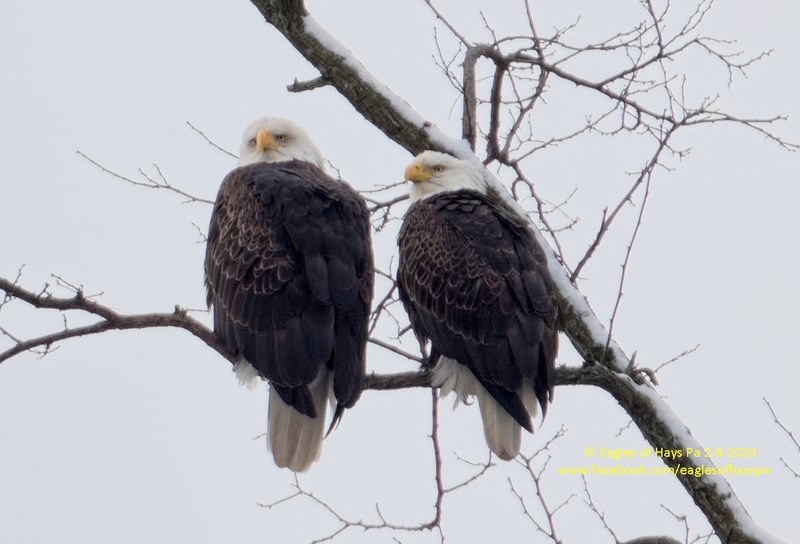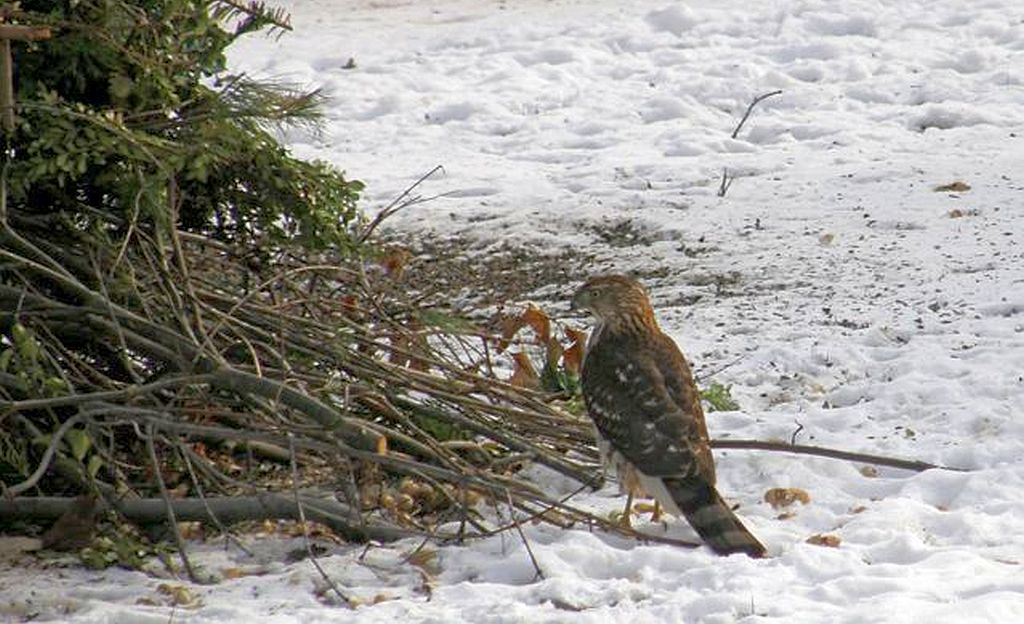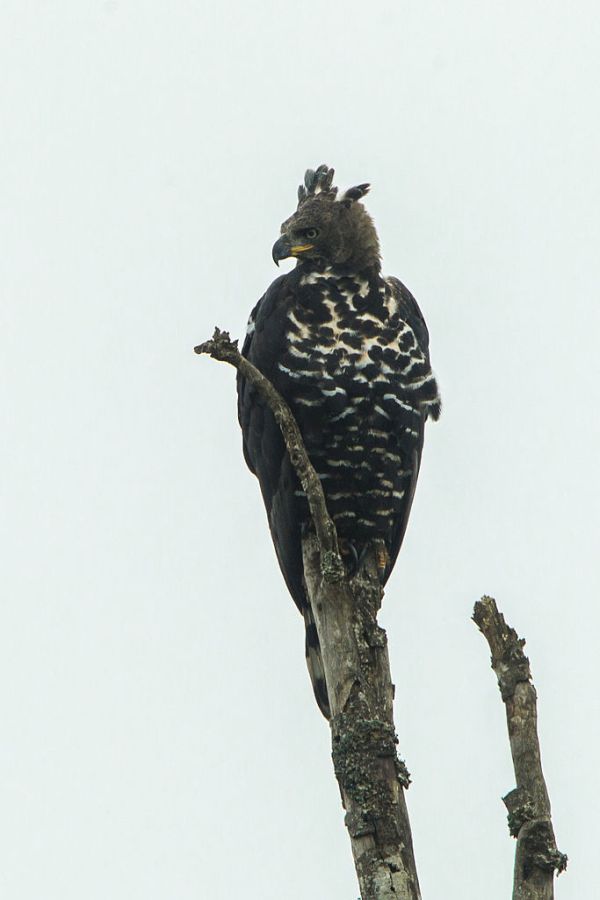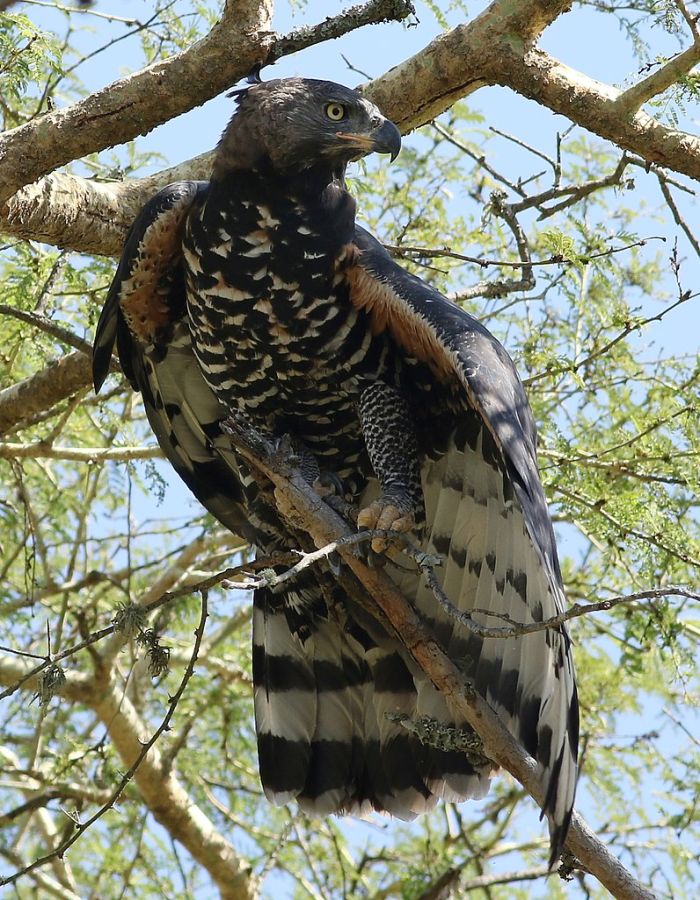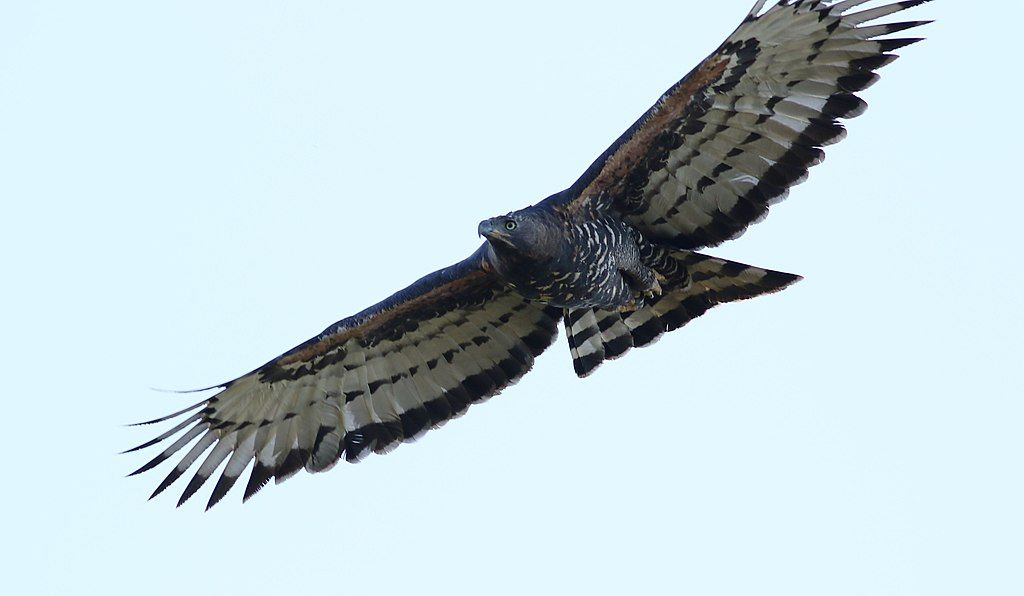16 June 2020
Sometimes learning from a small mistake is just what you need to make the next big step in life. A red-tailed hawk nestling found that out last Friday.
The three nestlings at Cornell’s Red-tailed Hawk Nestcam were ready to fledge on 14 June but no one had done it yet. One was eating and playing with his food. The other two were bored and puttering around the nest high above Cornell University’s stadium.
One of them, J2, decided to test his wings from a perch on the stadium light. It was windy. He started to slide down the light. Whoops! … I can fly!
Watch the faces of his siblings as he flies around the stadium and lands in the trees.
By 10:30am Sunday all three had fledged.
See video highlights of them leaving the nest at allaboutbirds.org/cornellhawks. (Scroll down below the live-cam panel.)
(video from Cornell Lab’s Red-tailed Hawk Cam)
